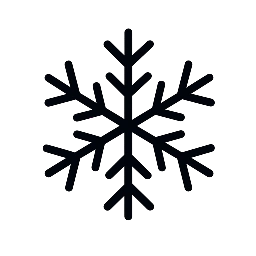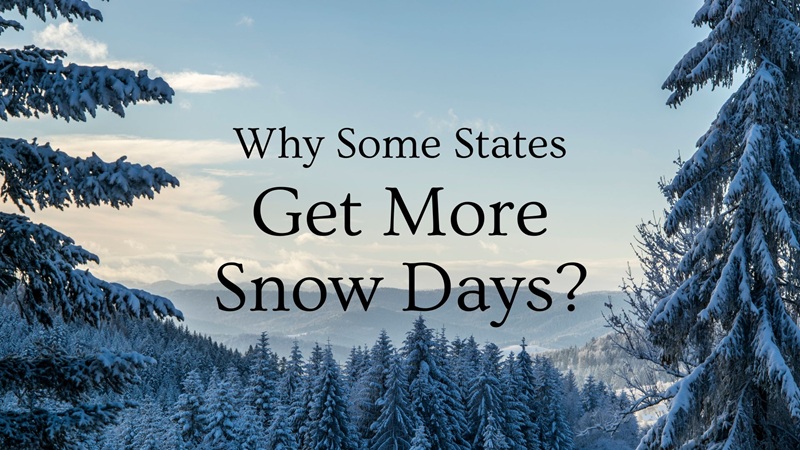Winter might mean cozy mornings and hot cocoa for some, but for students and teachers across the U.S., it also sparks one big question — what are the chances of a snow day tomorrow?
Every region handles winter differently, and while a few inches of snow might shut down schools in Tennessee, it takes a full blizzard to do the same in Minnesota. That’s exactly why a snow day prediction tool can be so useful: it helps you understand how local conditions, geography, and school behavior shape your actual chances of a day off.
This article digs into why some states experience more snow days than others, what that means for accurate snow day predictions, and how you can use this knowledge to interpret your local forecasts more effectively.
The Role of Geography and Climate in Snow Day Frequency
Before even opening a snow day prediction tool, it’s important to recognize the broader factors at play. Geography and climate lay the foundation: states in far-northern latitudes, states with mountainous terrain, or those near major bodies of water regularly accumulate more snow: and thus have a higher potential for school closures.
For example, according to a worldpopulationreview, some states average 15 inches of snow daily. And other sources show that mountainous states often receive tens of inches more snow annually than the national average.
Here are some of the key drivers:
- Elevation & mountain terrain: Higher elevation means colder temperatures and longer snow cover.
- Proximity to lakes or oceans: Lake-effect snow (in places like the Great Lakes region) boosts accumulation. Coastal storms (nor’easters) slam New England.
- Storm timing & frequency: Snow that falls overnight or during the morning commute increases closure likelihood.
- Temperature and ice formation: Conditions that create dangerous roads matter even more than raw snow totals.
When a snow day prediction tool factors these characteristics for your ZIP code or school district, it becomes far more predictive: because it’s reflecting real-world patterns for your region.
States That Lead in Snow Day Potential — And Why
Let’s dig into the states with higher snow-day potential based on snowfall and measurable snow-day frequency. While the data doesn’t directly measure every school closure, it’s a reliable indicator of where snow days are more common.
- Alaska: Leads by a large margin in measurable snow days. School closures are common because of both volume of snow and remote terrain.
- Maine: With consistent coastal storms and northerly elevation, Maine picks up heavy snow and frequent closures.
- Vermont & New Hampshire: New England’s high-elevation states average large snow totals and have infrastructure shaped around winter disruptions.
- Michigan: The lake-effect snow region (Upper Peninsula & Great Lakes shores) drives sudden accumulation and travel issues.
- Colorado: Rocky Mountain terrain sees deep snow and tricky travel conditions for schools.
Because your snow day prediction tool uses localized weather data combined with historical patterns, you’ll often see higher probability figures in these states: making the tool particularly useful for students, parents, and teachers there.
School Districts & Decision-Making Matter Too
Snowfall and geography set the stage, but the decision to close school lies with local administrators. A state may have heavy snow, yet whether a district uses a delay or full closure depends on:
- Road conditions and bus route access
- Student and teacher commute safety
- District precedent and cost-benefit of closing vs opening
- Timing of the weather event relative to school hours
A key strength of a quality snow day prediction tool is that it accounts for these behavioral patterns. If a district historically closes when snowfall reaches a certain depth, the tool learns that trend and reflects it in its probability.
Two districts within the same state may face the same storm, but the tool may show different chances of a snow day depending on their past behavior.
Changing Trends: What They Mean for Snow Days
The snow-day landscape isn’t static. Recent data suggests that many U.S. locations are seeing less snow cover or shorter snow seasons compared to past decades. For instance, the EPA notes that the area of North America covered by snow has decreased slightly over the last 50 years.
What this means for your snow day prediction tool:
- Even regions once known for frequent snow days may see fewer closures—but risk remains when unusual storms strike.
- Accurate tools must use recent weather data and not rely solely on historical averages.
- Smaller or rare snow events may now trigger closures in places unaccustomed to snow.
Your snow day prediction tool works best when it adapts to these shifts — updating its data streams and adjusting models for newer patterns.
Final Thoughts
Understanding why some states get more snow days than others helps you interpret the results from a snow day prediction tool more intelligently. Geography, climate, district behavior, and evolving weather trends all influence the probability of school closures.
Whether you live in a state where snow days are a regular part of winter, or a place where they’re rare but disruptive, using a reliable snow day prediction tool gives you an edge. Enter your location, review the probability, compare it with your state’s tendencies, and stay prepared for whatever winter throws your way.
Because when the forecast changes, your chance of a snow day may just depend on how well you’re ready — and how fast you check your snow day prediction tool.


Leave a Reply